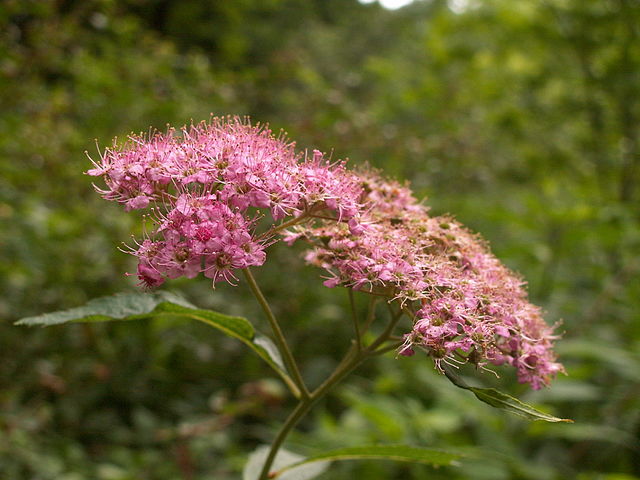
This attractive bush is a garden favorite, but it
seeds itself and can become invasive. It likes a wet
location, especially along the banks of a stream. This
bush was growing along the Squaw Run in Fox Chapel,
where it was finishing up its blooming in the middle
of July.
In the horticultural trade, “Spiraea” is often spelled
“Spirea.”

Gray describes the genus and the species, which in
his time had not gained much of a foothold in North
America:
SPIRAEA [Tourn.] L. Calyx 5-cleft, short, persistent.
Petals 5, obovate, equal, Imbricated in the bud.
Stamens 10-50. Pods (follicles) 5-8, not inflated,
few-several-seeded. Seeds linear, with a thin or loose
coat and no albumen. — Shrubs, with simple leaves, and
white or rose-colored flowers in corymbs or panicles.
(The Greek name, from speiran, to twist,
from the twisting of the pods in some of the original
species.)
Flowers in compound corymbs.
Calyx-tube top-shaped, pubescent.
S. japónica L. f. Stems 1 m. or more high;
leaves 7-9 cm. long, glaucous beneath; petals pink to
deep rose-color. — Frequent in cultivation, and
occasionally escaping, s. Ct. (Graves) and e. Pa.
(Introd. from Asia.)